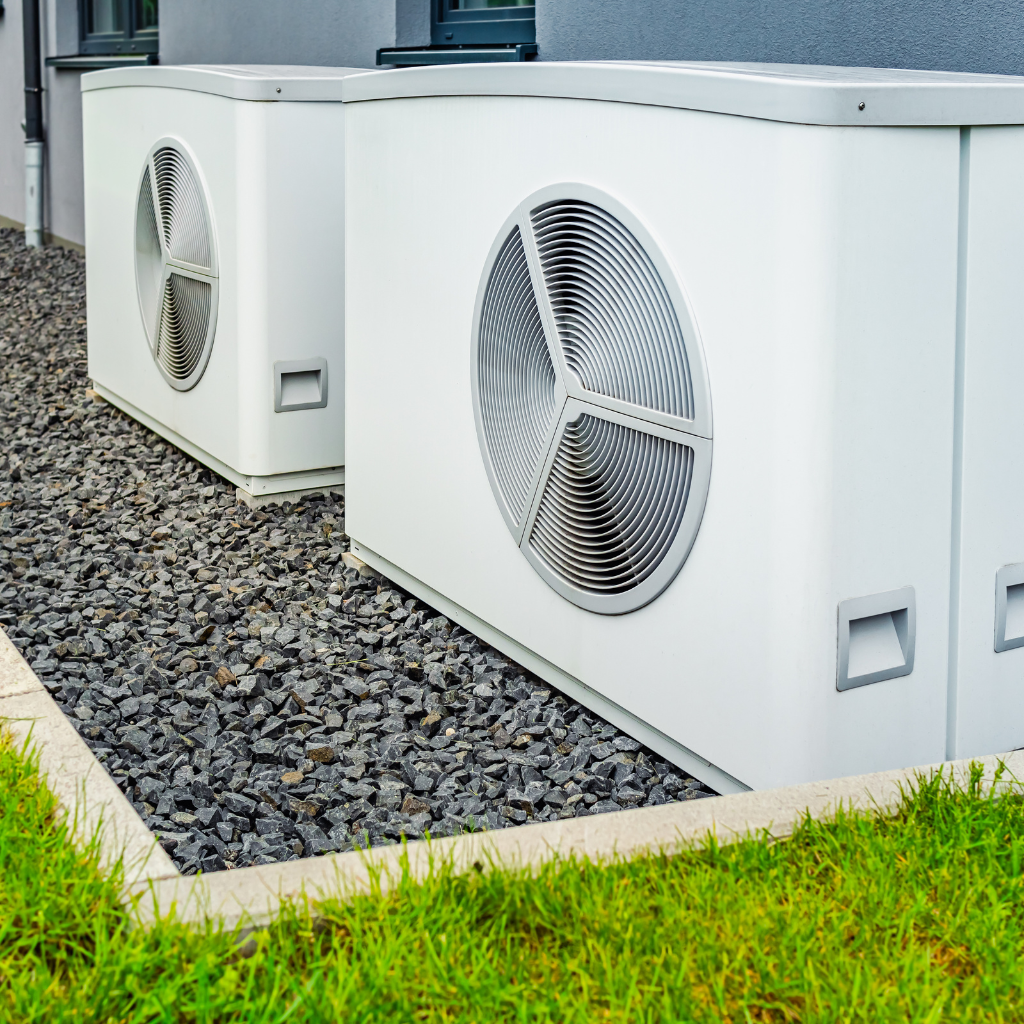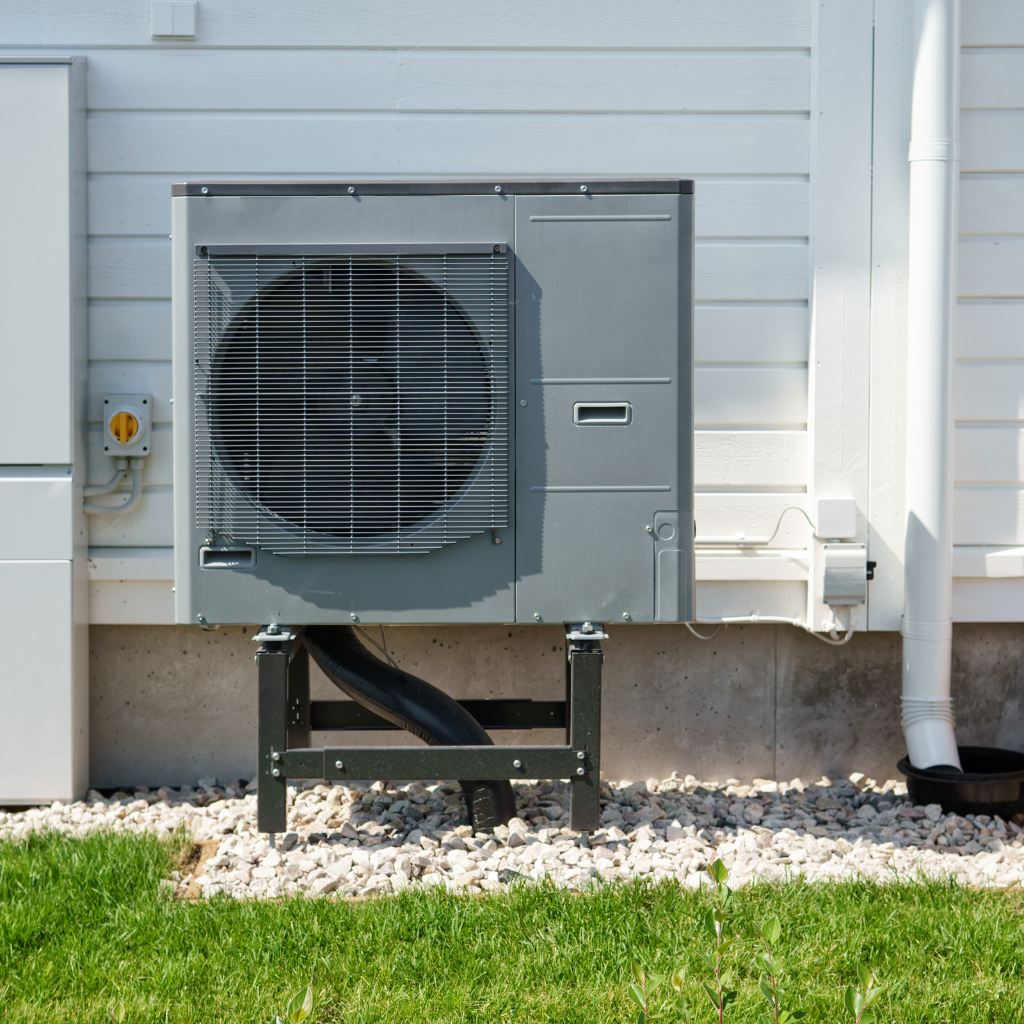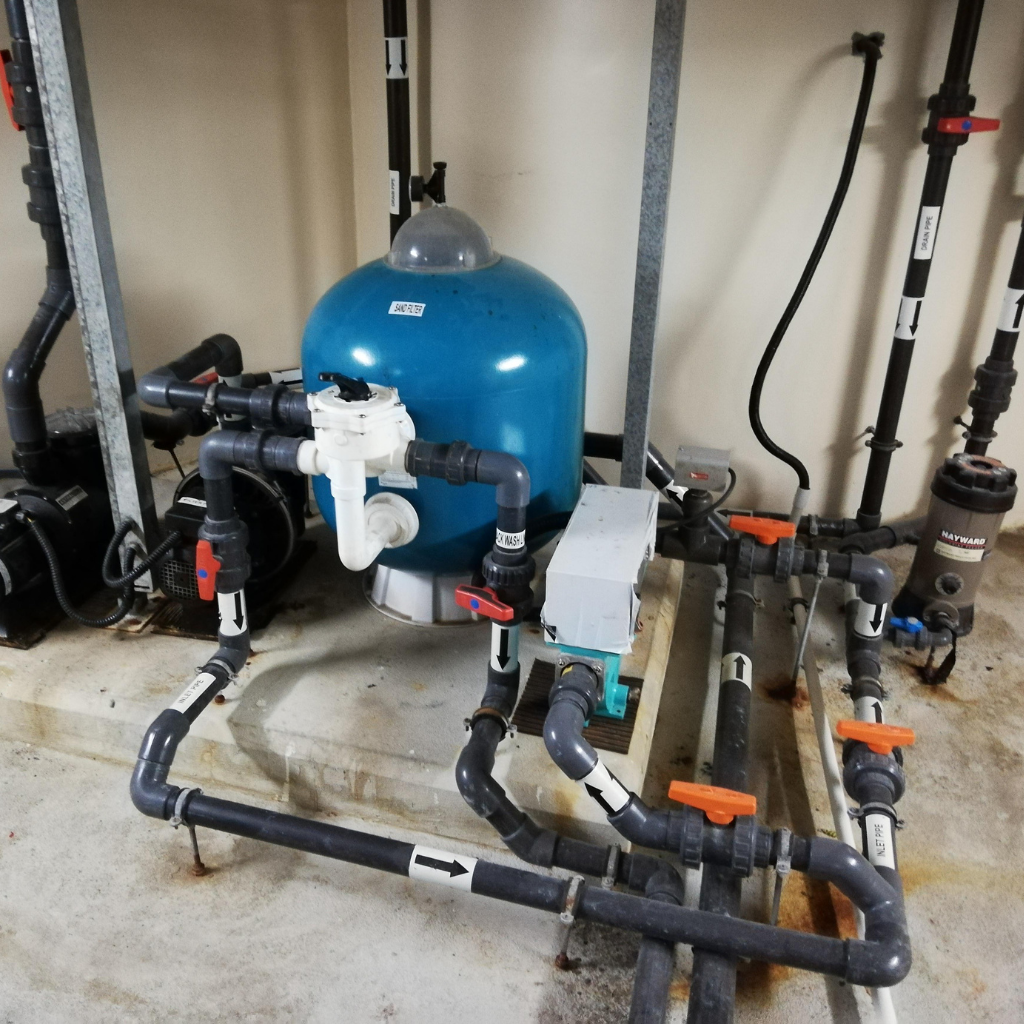Heat pumps, with their varied designs, exhibit distinct mechanisms to enhance energy efficiency. Air-source models utilize ambient air temperature differentials, while geothermal systems tap into the earth’s stable thermal reserves. Ductless variants minimize distribution losses, and hybrid units intelligently alternate energy sources. Each type contributes uniquely to reducing energy consumption and operational costs. However, the nuances of their efficiency gains and applications in diverse climates invite further exploration.
Key Takeaways
- Geothermal heat pumps utilize stable underground temperatures for high energy efficiency and reduced operational costs.
- Ductless mini-split systems enhance localized efficiency by minimizing thermal losses and providing targeted climate control.
- Air-source heat pumps offer both heating and cooling, optimizing energy efficiency in moderate climates.
- Hybrid heat pumps automatically select cost-effective energy sources for efficient operation in varying conditions.
- Water-source heat pumps use nearby water bodies to transfer thermal energy efficiently.
Can Different Heat Pump Types Improve Heating System Efficiency?
Heat pumps work by moving heat from an outside source into a building, using refrigeration technology to deliver both heating and cooling.
The primary classifications of heat pumps include air-source, ground-source, and water-source systems, each employing distinct mechanisms to optimize thermal transfer efficiency.
Evaluating these variations is essential in determining their impact on the overall energy efficiency of residential heating systems.
How does a heat pump work for home heating and cooling needs?
When examining the operational mechanism of a heat pump for home heating and cooling, understanding its thermodynamic principles is essential. A heat pump system functions by transferring heat rather than generating it, thereby optimizing energy efficiency.
The primary components include the evaporator, compressor, condenser, and expansion valve. An air-source heat pump extracts thermal energy from outdoor air, while a geothermal heat pump utilizes the earth’s consistent temperature, enhancing the system’s energy efficiency.
Mini-split heat pumps, a variant of air-source systems, provide zone-specific climate control without ductwork. The cooling system reverses the cycle, expelling indoor heat outside.
Which Heat Pump Options Are Best Suited for Your Home?
Various heat pump types are available for residential applications, each contributing distinctively to system efficiency.
The air source heat pump, prevalent in moderate climates, utilizes external air to heat and cool, interfacing with an air handler for ideal distribution.
Ground source heat pumps, alternatively known as geothermal systems, extract thermal energy from the earth, offering superior energy efficiency by maintaining consistent underground temperatures.
Water source heat pumps operate similarly, using nearby water bodies as thermal reservoirs.
Ductless heat pumps, or mini-splits, eliminate the need for ductwork, enhancing efficiency in localized applications.
Finally, hybrid heat pumps integrate traditional heating systems, optimizing energy efficiency by alternating between electricity and fossil fuels based on environmental conditions.
Each variant’s design caters to enhanced heating system performance and energy efficiency.
How Does an Air Source Heat Pump Maintain Year-Round Comfort in Your Home?
An air source heat pump operates by transferring thermal energy between the indoor and outdoor environments, thereby providing both heating and cooling capabilities with high energy efficiency throughout the year.
Its ability to function as a standalone system for both heating and cooling can negate the need for a separate air conditioning unit, contingent on climatic conditions.
This makes it a highly suitable option for moderate climates, where it can optimize energy savings without compromising on thermal comfort.

What makes an air source heat system energy efficient year-round?
Although often underestimated, the energy efficiency of an air source heat pump system is a result of its ability to transfer heat rather than generate it. This heating and cooling system operates by absorbing heat from the outside air and moving it indoors during the heating mode.
Unlike conventional systems, the efficient heat pump adapts to temperature variations, maintaining energy-efficient performance year-round. In cold climates, specialized cold-climate heat pumps are engineered to function effectively even in lower temperatures, ensuring consistent thermal comfort.
Can an air source heat pump replace your air conditioner fully?
Building upon the inherent energy efficiency of air source heat pumps, their capacity to potentially replace traditional air conditioning systems warrants examination.
An air source heat pump operates by extracting heat from the ambient air and moving heat from one place to another, consequently providing both heating and cooling for your home. This dual functionality allows the heat pump to perform the role of both heater and air conditioner.
Heat pumps use a refrigeration cycle to achieve this, effectively cooling your home during warmer months. The efficiency of a heat pump stems from its ability to transfer heat rather than generate it, which is a key distinction from conventional systems.
As a result, in climates where extremes are not prevalent, air source heat pumps can offer a viable replacement for air conditioners.
Is this the right heat pump for moderate climates and savings?
Air-source heat pumps, specifically ductless mini-split systems, exhibit ideal performance in moderate climates. These units efficiently manage heating and cooling by transferring heat from the air, leading to significant energy efficiency and cost savings.
Unlike ground-source heat pumps, which require extensive installation, air-source systems offer ease of installation and lower upfront costs. The mini-split design provides zonal temperature control, enhancing energy savings.
In moderate climates, where temperature extremes are infrequent, air-source heat pumps maintain indoor comfort with reduced energy consumption.
As a result, selecting the right heat pump entails evaluating climatic conditions and energy efficiency requirements, and so making air-source systems a viable choice for maximizing savings in such environments.
What Makes a Geothermal Heat Pump a Smart Choice for Home Heating?
Geothermal heat pumps, or ground source heat pumps, leverage the stable subterranean temperatures to provide consistent thermal energy exchange, effectively managing home heating needs throughout varying seasonal conditions. These systems can use heat stored underground to warm indoor spaces or even extract heat from a cool space, maintaining efficiency year-round.
Their inherent efficiency is attributed to reduced energy consumption compared to conventional systems, leading to significant cost savings over time. Geothermal units can also heat water for domestic use, offering an all-in-one solution that rivals the functionality of air-to-water heat pumps.
Additionally, the durability and minimal maintenance requirements of geothermal systems position them as a viable long-term solution for sustainable home heating. With many homeowners now seeking eco-friendly alternatives, geothermal technology continues to grow in popularity across various climates.
How does a ground source heat pump work under changing seasons?
When considering the operation of a ground source heat pump across varying seasons, it is essential to understand the consistent thermal exchange properties of the Earth. The ground-source heat pump leverages an underground loop to extract or deposit thermal energy, adapting efficiently to seasonal variation. The system capitalizes on geothermal heat, offering energy efficiency by maintaining a stable heat exchange process.
- Heat Exchanger Efficiency: The heat exchanger maintains peak performance by utilizing heat from the ground, irrespective of external climate changes.
- Seasonal Adaptability: During colder months, it extracts heat from the ground, while in warmer seasons, it deposits heat, ensuring balanced climate adaptation.
- Energy Consistency: The constant underground temperature reduces energy consumption.
- Environmentally Sustainable: By exploiting natural thermal energy, it minimizes reliance on fossil fuels.
What makes geothermal heat pump technology cost-effective?
While evaluating the cost-effectiveness of geothermal heat pump technology, one must consider the long-term reduction in operational expenses due to its high efficiency and low maintenance requirements. Utilizing ground-source heat, these systems extract heat energy from the earth, making them a cost-effective solution. Geothermal heat pumps serve as a primary heat source, providing heating and cooling through efficient heat transfer. The following table highlights key aspects:
| Aspect | Benefit | Description |
|---|---|---|
| Energy Efficiency | High | Efficient use of heat from the earth |
| Operational Cost | Low | Reduced energy consumption |
| Maintenance Requirements | Minimal | Less frequent servicing needed |
| Heat Pump Technology | Advanced | Innovative heat transfer mechanisms |
This heat pump technology offers a sustainable approach, optimizing heat energy utilization while ensuring economic advantages.
Is a geothermal heat pump the best type for long-term use?
Why might a geothermal heat pump be considered the ideal choice for long-term residential heating needs? The key lies in its unparalleled energy efficiency and sustainable heating capabilities. Geothermal heat pumps utilize ground-source heat to extract heat from the earth, ensuring consistent performance across varying climates.
Here are four compelling reasons:
- Energy Efficiency: By leveraging stable subterranean temperatures, geothermal heat pump models achieve higher coefficient of performance (COP) ratings compared to air-source options.
- Longevity: With minimal mechanical wear, these systems offer a lifespan exceeding 25 years, ensuring long-term use.
- Renewable Energy: Ground-source systems are inherently sustainable, reducing reliance on fossil fuels and lowering carbon footprints.
- Cost Savings: Initial investments are offset by reduced operational costs and government incentives, enhancing their economic viability.
Are Ducted Heat Pumps a Reliable Type of Heating System?
Ducted heat pumps offer a thorough solution for evenly distributing thermal energy across larger homes, utilizing existing duct infrastructure to optimize thermal management. As a common type of heat pump found in residential applications, they are particularly effective in properties with extensive layouts and centralized systems.
When compared to ductless systems, ducted variants provide superior coverage in open layouts, ensuring consistent temperature regulation across expansive spaces. Heat pumps can efficiently collect thermal energy—even drawing heat from a cool space—to maintain desired indoor temperatures, regardless of outdoor conditions.
Heat pumps also offer the advantage of scalability and seamless integration with existing HVAC systems, making ducted models an ideal option for enhancing energy efficiency in residential properties with substantial square footage.
How does this type of heat pump compare to ductless systems?
When evaluating the efficacy of ducted heat pumps compared to ductless systems, several technical considerations arise. Both systems utilize heat from the air; however, their application can vary markedly. A ducted heat pump provides uniform heating and cooling across the entire home, making it suitable for centralized comfort.
In contrast, ductless mini-split systems offer targeted climate control, ideal for specific zones.
Key differences include:
- Energy Efficiency: Ductless systems often boast superior energy efficiency due to reduced thermal losses.
- Installation Complexity: Ducted systems require extensive ductwork, whereas ductless systems are easier to install.
- Cost Implications: Initial costs for ductless systems are generally lower, but ducted systems may be more cost-effective for larger setups.
- Flexibility: Ductless systems offer greater flexibility in placement and zoning control.
Is a ducted heat pump ideal for larger homes or open layouts?
How effectively do ducted heat pumps serve larger residences or open-plan environments? In larger homes, ducted heat pumps offer a centralized solution that efficiently distributes heat and cool air, leveraging existing ductwork to maintain peak energy efficiency. This type of heating system functions as the primary heat source, enhancing comfort across expansive spaces.
The integration of a ducted heat pump for your home guarantees that temperature regulation is uniform, a critical factor in open layouts where air flow dynamics are complex.
Utilizing ductwork, the system, alongside your heat pump, minimizes thermal losses compared to individual units. Consequently, ducted systems not only keep your home comfortable but also minimize energy consumption, making them a viable choice for expansive residential settings.
Can a Ductless Mini-Split Heat Pump Cool and Heat Efficiently?
A ductless mini-split heat pump operates by transferring heat between indoor and outdoor environments via a compressor and refrigerant lines, making it highly efficient in homes. This type of home heat pump is often used as a way to heat and cool specific zones without the inefficiencies associated with central duct systems.
Its popularity largely stems from its ability to provide precise zone control, allowing for individualized climate management in different areas of a residence. It can also work as a heating system alongside your heat source, supplementing or replacing the existing heat setup, especially in older homes or additions.
Additionally, its suitability for homes lacking ductwork presents a significant advantage, as it eliminates the need for extensive duct installation while maintaining effective thermal regulation. In cooling mode, the heat pump removes the heat from indoor spaces and releases it outdoors, ensuring comfort even during warmer months.

How does a ductless mini-split heat system function in homes?
Why do ductless mini-split heat systems present a viable solution for efficient home climate control? These systems enhance energy efficiency by employing a heat pump mechanism to both heat and cool. They operate without ductwork, reducing thermal losses and improving efficiency inside your home.
A ductless mini-split heat system functions by extracting heat from the outside air and transferring it indoors during winter, and reversing this process to cool in summer.
Key features include:
- Zoned Heating and Cooling: Target specific areas for ideal climate control.
- Minimal Installation: Absence of ducts simplifies setup and maintenance.
- Variable Speed Compressors: Adjusts output to conserve energy.
- Inverter Technology: Maintains a consistent indoor temperature efficiently.
These types of heat pumps offer a precise and efficient heating system for modern residences.
Why are mini-split heat pumps popular for zone control options?
Owing to their inherent design, mini-split heat pumps are gaining popularity for zone control applications due to their ability to deliver precise climate management.
These systems utilize a ductless heat methodology, enabling individualized heating or cooling across different zones within a building. The heat pump operates by extracting heat from the outside environment and transferring it inside during colder months, and inversely, removes heat from interior spaces during warmer periods.
This dual functionality allows the heating system to move heat efficiently, optimizing energy efficiency. The mini-split heat configuration facilitates targeted zone control, reducing energy consumption by conditioning only occupied areas.
Consequently, they represent an energy-efficient alternative, as they minimize unnecessary energy expenditure by avoiding whole-building heating or cooling.
Is a mini-split heat pump suitable for homes without ducts?
Significantly, the absence of ductwork in a home does not preclude effective heating and cooling solutions, as ductless mini-split heat pumps offer a viable alternative.
These systems, devoid of ducts, excel in energy efficiency, providing targeted heating and cooling. Utilizing air-source heat pump technology, they can efficiently heat and cool homes, even in cold climates.
Key advantages include:
- Precision Zoning: Allows for tailored temperature control in distinct zones, enhancing comfort and reducing energy waste.
- Energy Efficiency: Ductless systems minimize energy losses associated with traditional ductwork, maximizing performance.
- Versatility: Functions effectively as both a heating system and an electric heat solution, adaptable to various climates.
- Installation Flexibility: Ideal for retrofitting homes without existing ductwork, offering a non-invasive solution.
This makes mini-split systems an excellent choice for ductless applications.
How Do Hybrid and Absorption Heat Pumps Improve Energy Efficiency?
Hybrid heat pumps optimize energy efficiency by integrating multiple energy sources, such as electricity and natural gas, to adapt to varying thermal demands. This flexibility is particularly beneficial in colder regions, where cold-climate heat pumps can efficiently maintain indoor comfort even during extreme temperatures.
The dual-source capability inherently provides a more flexible and efficient operation compared to systems reliant on a singular heat source. In some configurations, additional heating is driven by another heat source, such as a gas furnace, which is often built into the heat pump to enhance performance when outdoor temperatures drop.
Furthermore, their ability to switch seamlessly between gas and electric heating allows for strategic energy use based on cost and availability, enhancing overall system performance. These systems can also capture heat from a cool space—a feature useful for maintaining balance across different zones in a home.
How Does a Hybrid Heat Pump Use Multiple Sources for Efficiency?
Why do hybrid heat pumps stand out in the domain of energy efficiency? They leverage multiple heat sources to enhance performance. By integrating mechanisms like the absorption heat pump and gas-fired heat pumps, hybrid systems capitalize on diverse energy inputs, enhancing their capacity to both heat and cool environments.
Key attributes include:
- Hybrid Heat Capability: Utilizes a combination of heat sources for maximum energy efficiency.
- Dual Functionality: Offers the flexibility to heat and cool spaces, adapting to varying demands.
- Energy Efficiency: Maximizes efficiency by switching between gas-fired and electric resistance heat.
- Complementary Systems: Operates a heating system alongside other technologies to provide heat effectively.
This multifaceted approach mitigates energy loss, ensuring that hybrid heat pumps maintain superior efficiency.
What Makes a Hybrid Heat System Better Than a Single Heat Source?
When evaluating the comparative advantages of hybrid heat systems over single-source models, the integration of multiple heat sources emerges as a pivotal factor. A hybrid system efficiently collects and transfers heat from one source to another, maximizing energy efficiency.
Unlike a single heat source, which may struggle in extreme conditions, hybrid systems employ cold-climate heat pumps alongside auxiliary systems to heat and cool a home efficiently. According to the Department of Energy, these systems optimize performance by leveraging the strengths of each component, thereby reducing operational costs.
Heat pumps move heat from one area using less energy, and when combined in a hybrid system, they enhance overall efficiency and adaptability. Such configurations are particularly advantageous in varied climatic conditions.
Can Hybrid Heat Pumps Switch Between Gas and Electric Heating?
How do hybrid heat pumps seamlessly switch between gas and electric heating? This capability is pivotal for maximizing energy efficiency in various heat pump types.
By integrating both gas heating and electric heating, hybrid systems enhance the efficiency of the heating system, especially in cold climates. The control system intelligently decides the best heat source based on:
- Temperature Needs: Automatically selects gas heating in extremely cold conditions for rapid warming.
- Energy Costs: Switches between heat sources to minimize operational costs.
- Environmental Impact: Prioritizes electric heating when renewable energy is abundant.
- System Efficiency: Guarantees the heating system operates efficiently by selecting the most effective heat source.
Thus, hybrid heat pumps provide a versatile solution, effectively boosting energy efficiency by adjusting to dynamic environmental and economic conditions.

Conclusion
To summarize, the diverse array of heat pump technologies, including air-source, geothermal, ductless, hybrid, and absorption systems, demonstrates a significant advancement in energy efficiency for residential and commercial heating and cooling applications. Each type leverages distinct mechanisms—such as ambient air extraction, subterranean thermal stability, and smart energy source switching—to optimize performance and reduce energy consumption. Collectively, these systems offer adaptable solutions tailored to varying climatic conditions and operational requirements, ultimately enhancing thermal efficiency and minimizing operational expenditures.







